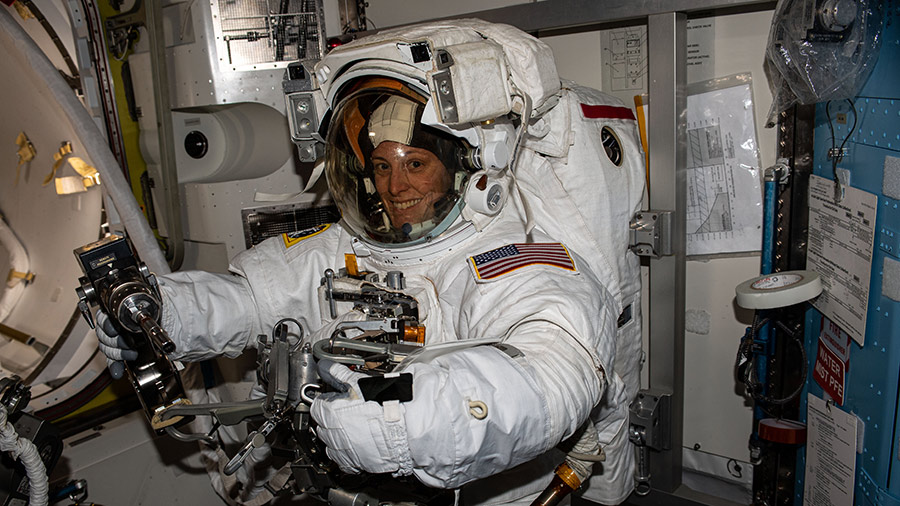
Brain research topped the science schedule on Wednesday while the Expedition 70 crew kept up its cargo work. Three individuals also continue focusing on their departure from the International Space Station this weekend.
The Human Brain Organoid Models for Neurogenerative Disease and Drug Discovery (HBOND) investigation on the station is helping researchers understand how microgravity affects the central nervous system. Results may also shed light on ways to prevent and treat Parkinson’s disease and multiple sclerosis on Earth. NASA astronauts Mike Barratt and Tracy C. Dyson treated brain organoid samples exposed to Parkinson’s and multiple sclerosis with a drug injection for the neurodegenerative disease study today. Those samples will be analyzed under the KERMIT fluorescence microscope to evaluate the effectiveness of the drug treatment.
Barratt then moved on and cleaned cupola window scratch panes in preparation for the total eclipse of the sun on April 8 before joining NASA Flight Engineer Loral O’Hara for an eye exam. O’Hara imaged Barratt’s retina, optic nerve, and cornea using standard medical imaging hardware with support from doctors on the ground. Earlier in the day, O’Hara operated the Ultrasound 2 device and scanned the neck, shoulder, and leg veins on NASA Flight Engineer Jeanette Epps. The eye and vein exams were part of regularly scheduled medical checkups ensuring astronauts remain healthy in space. O’Hara also spent a few moments with Dyson replacing batteries on and calibrating chemical sensors.
NASA Flight Engineer Matthew Dominick started his day exploring how the brain regulates blood flow in weightlessness. He wore a specialized cap and attached sensors to himself measuring his blood flow, blood pressure, and electrical heart activity simultaneously. Results may help counteract Earthbound and space-caused blood pressure issues such as light-headedness or fainting. Dominick then spent the rest of the day on a variety of cargo and cleaning tasks. Epps and Barratt also continued unpacking some of the more than 6,000 pounds of science and supplies aboard the SpaceX Dragon cargo spacecraft.
Cosmonaut Oleg Novitskiy continued stowing equipment and readying the Soyuz MS-24 spacecraft that he, O’Hara, and Belarus spaceflight participant Marina Vasilevskaya will ride back to Earth on April 6. O’Hara packed personal items for return aboard the Soyuz as well as excess gear that will be returned aboard the Dragon spacecraft. Vasilevskaya spent her day researching how diet affects microbes that live in a crew member’s gut system.
Station Commander Oleg Kononenko gathered science hardware and radiation detectors for return to Earth aboard the Soyuz spacecraft. Flight Engineer Nikolai Chub explored futuristic spacecraft and robotic piloting techniques then collected station microbe samples for analysis. Flight Engineer Alexander Grebenkin assisted Chub with the microbe collections and also serviced computer and video gear throughout the station’s Roscosmos segment.
Learn more about station activities by following the space station blog, @space_station and @ISS_Research on X, as well as the ISS Facebook and ISS Instagram accounts.
Get weekly video highlights at: https://roundupreads.jsc.nasa.gov/videoupdate/
Get the latest from NASA delivered every week. Subscribe here: www.nasa.gov/subscribe




